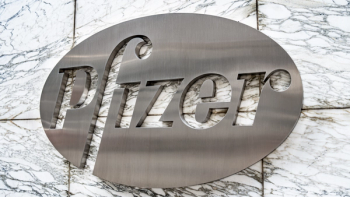Key Takeaways
- Roche moves prasinezumab into Phase III for early Parkinson disease (PD): Decision supported by favorable trends in delaying motor progression and a strong safety profile observed in the PADOVA Phase IIb trial and its open-label extensions.
- Promising subgroup data in levodopa-treated patients: Prasinezumab showed a more pronounced effect in the 75% of patients on levodopa, achieving a statistically significant hazard ratio of 0.79.
- Growing global burden underscores need for new treatments: With PD prevalence rising and no current disease-modifying therapies, prasinezumab could address a significant unmet medical need.
Roche announced that it plans to advance prasinezumab, an investigational anti-alpha-synuclein antibody, into Phase III development for early-stage Parkinson disease (PD). The decision is based on results from the Phase IIb PADOVA trial and its open-label extension (OLE), along with the Phase II PASADENA OLE. Although the primary endpoint of time to confirmed motor progression did not achieve statistical significance, results demonstrated favorable trends suggesting slowed motor decline over 104 weeks, with sustained benefits observed in longer-term OLE data, according to the study investigators.1
Could Prasinezumab Become the First Disease-Modifying Therapy for Parkinson’s?
"We are encouraged by the efficacy signals observed across the two Phase II trials and their open-label extensions, combined with the favorable safety and tolerability profile of prasinezumab," said Levi Garraway, MD, PhD, chief medical officer, head, global product development, Roche, in a press release. "We also recognize the substantial need for new treatment options, and the totality of data suggest that prasinezumab may have the potential to become the first disease-modifying treatment for people with Parkinson’s disease."
PADOVA Trial Design and Key Results
- The multicenter, randomized, double-blind PADOVA trial evaluated the efficacy and safety of prasinezumab compared with placebo in 586 patients with early-stage PD who were on stable symptomatic treatment.
- Patients were randomly assigned to receive either monthly intravenous doses of prasinezumab 1500 mg or placebo every four weeks for at least 76 weeks.
- Time to confirmed motor progression was based on a ≥5-point increase in Movement Disorder Society-Unified Parkinson’s Disease Rating Scale Part III score assessed in OFF medication state.
- Prasinexumab demonstrated potential clinical efficacy in time to confirmed motor progression (HR=0.84 [0.69-1.01], p=0.0657).
- Notably, the treatment demonstrated a more pronounced effect in the 75% of patients who were treated with levodopa (HR=0.79 [0.63–0.99]).
- The study also showed consistent positive trends across multiple secondary and exploratory endpoints.
- Importantly, prasinezumab was well tolerated, with no new safety signals identified, supporting continued development.2
The Growing Burden of Parkinson Disease
According to the Parkinson’s Foundation, there are approximately 1.1 million people currently living with PD in the United States. The rate is expected to rise to 1.2 million by 2030, with around 90,000 people receiving a PD diagnosis each year. Globally, approximately 10 million people are currently living with PD. It is 1.5 times more common in men than it is in women. While an estimated 4% of people with PD are first diagnosed before reaching 50 years of age, the incidence increases with age.
In 2020, the estimated total economic burden of PD in the United States—including treatment, social security payments, and lost income—was approximately $52 billion. Adjusted for inflation, this figure is expected to reach $61.5 billion annually by 2025.3
Global Health Impact and Mortality Trends
According to the World Health Organization, the prevalence of PD has nearly doubled over the past 25 years. In 2019, it resulted in 5.8 million disability adjusted life years, an 81% increase from 2000, marking an 81% increase from 2000. PD was also responsible for approximately 329,000 deaths in 2019—double the number recorded in 2000.4
“Parkinson’s is complex and devastating with no disease modifying treatment options available for the millions of people impacted,” said Garraway, in a December 2024 press release. “We believe the consistent efficacy trends from the Phase IIb study of prasinezumab merit further exploration. We will continue our close collaboration with the Parkinson’s community as we further evaluate the data to determine next steps.”2
References
1.Roche to advance prasinezumab into Phase III development for early-stage Parkinson's disease. Roche. June 15, 2025. Accessed June 20, 2025. https://www.roche.com/media/releases/med-cor-2025-06-16
2. Roche’s Phase IIb study of prasinezumab missed primary endpoint, but suggests possible benefit in early-stage Parkinson’s disease. Roche. December 18, 2024. Accessed June 20, 2025. https://www.roche.com/media/releases/med-cor-2024-12-19#:~:text=PADOVA%20is%20a%20Phase%20IIb,treatment%2C%20which%20is%20currently%20ongoing.
3. Statistics. Parkinson’s Foundation. Accessed June 20, 2025. https://www.parkinson.org/understanding-parkinsons/statistics
4. Parkinson disease. WHO. Accessed June 20, 2025. https://www.who.int/news-room/fact-sheets/detail/parkinson-disease





